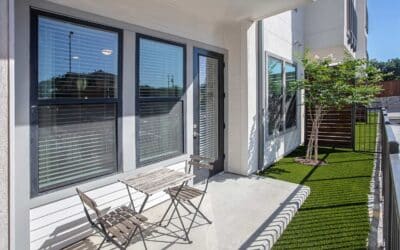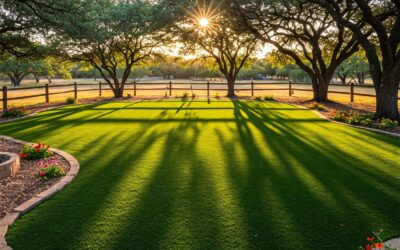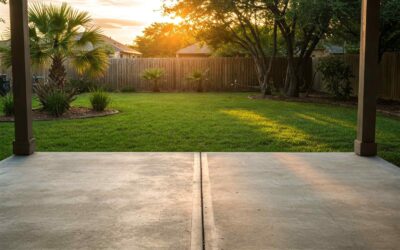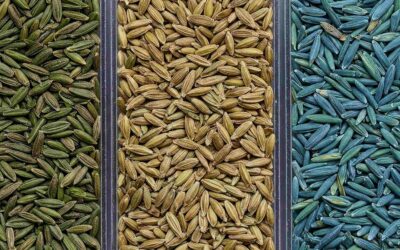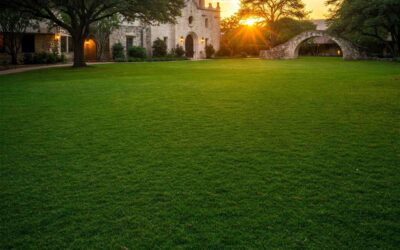Neyland Stadium is one of college football’s most iconic landmarks, the sixth largest stadium in the U.S., and the eighth largest in the world.
Located on the campus of the University of Tennessee (UT) in Knoxville and home to the Volunteers football team (the “Vols”), the stadium is over 100 years old and has retained natural grass through most of its storied history.
While many college football stadiums have switched to artificial grass in the past two decades, the Neyland Stadium has resisted the low maintenance and cost-saving benefits of installing a turf playing surface.
But the stadium’s story is not quite that straightforward—as it was actually one of the pioneers of artificial grass sports fields back in the late 1960s.
Let’s take a closer look at the playing field at the Neyland Stadium, quickly recap the stadium’s history, and consider the many pros and cons of sports turf and real grass:
Does Neyland Stadium Have Real Grass or Turf?
The playing surface at the Neyland Stadium is currently real grass but the venue used artificial grass after AstroTurf first burst onto the U.S. sports scene in the late1960s.
Surprisingly for many, Tennessee-Turf (TartanTurf-3M) was installed at the Neyland for 25 years between 1968 and 1993. After numerous renovations and the switch back to real grass in 1994, the natural playing surface has been retained ever since.
Real grass requires so much maintenance, including regular mowing, aeration, and re-sodding, It also requires extensive work after pitch invasions by fans! This all adds considerably to the cost of ownership of natural grass playing surfaces.
For this reason, the grass field at the Neyland Stadium is the exception rather than the rule nowadays as the majority of college football games around the U.S. are played on artificial fields.
It’s also worth noting that the Tennessee Titans, who play their home games at the Nissan Stadium in Nashville, switched to artificial grass from real grass for the 2023 season.
History of The Neyland Stadium
The origins of the Neyland Stadium can be traced to 1919 when it was known as Shields-Watkins Field. This area originally included a track and space for baseball games, as well as the University of Tennessee’s first regulation football field.
The field, including its drainage system, ended up being constructed mainly from the efforts of UT students.
A stadium soon enclosed the field (which has retained its name to this day) and this recognized the efforts of General Robert R. Neyland, the man considered most responsible for the growth and development of Tennessee’s football team.
Neyland was the head coach from 1926-1952 and athletic director from 1946–1962, with two interruptions for military service. He was credited with increasing the capacity of the stadium 14-fold during his tenure.
The modern stadium, as well as playing host to Vols home games, has been used to host large conventions, concerts, political rallies, religious gatherings, and even several NFL exhibition games.
With an official capacity of almost 102,000, it remains one of the largest stadiums on the planet, which surprises many people outside the U.S. who don’t understand the popularity of collegiate football here.
After 16 expansion projects since opening its doors, the Neyland Stadium looks very different from its past incarnations but remains one of the best-known college football stadiums in the nation. Its checkerboard end zones are particularly iconic.
What Type of Grass Is Used At The Neyland Stadium?
Since 19994, the Neyland Stadium has used natural grass and the current playing surface at Shields-Watkins Field is a variety of Bermuda grass called Latitude 36.
The University researched many different types of Bermuda grass, looking for a variety that would stay greener longer in the East Tennessee climate.
Latitude 36 is a high-quality, cold-hardy Bermuda grass that stands up well to high traffic and has excellent tensile strength. It was developed by Oklahoma State University.
Grass vs Turf for College Football
Football seasons tend to put grass playing surfaces through their paces, with extensive maintenance required to keep fields looking and performing up to scratch all year round. Divots and compression of the grass are particular issues that develop quickly with real grass. Tall stadiums also tend to block sunlight, which is essential for healthy grass growth.
The ease with which artificial grass copes with football conditions and consistently looks pristine is one of the main reasons why the majority of college football teams play on turf. A total of 94 schools play home FBS football on artificial surfaces while 39 play on grass. This compares with 75 schools playing on grass twenty years ago.
However, within the Southeastern Conference (SEC), where the Vols play, the majority of teams still play on real grass. Only the University of Missouri and the University of Kentucky play on artificial turf.
In the NFL, however, the story is very different, with artificial turf installed at 15 of the 28 stadiums.
Pros and Cons of Artificial Turf At Sports Stadiums
The Vols are set to play on natural grass for the foreseeable future but with so many stadiums making the switch to artificial turf, let’s consider the pros and cons of real grass and artificial grass playing surfaces:
Main Pros of Artificial Turf
- Very low maintenance
- Highly cost-effective
- Natural look and appearance all year round
- Weather resistant (rain, sun, ice and snow)
- Increased playing time (fewer weather interruptions)
- Highly durable
- Drains well
- Little water required
- Few chemicals used
- No mud
Main Cons of Artificial Turf
- Higher installation price
- Some players prefer natural grass
- Some negative stigma remains about turf
- Requires infill, which may contain chemicals
- Hotter than grass
Main Pros of Real Grass
- Looks natural and lush when well-kept
- Gives out oxygen and filters pollution
- Absorbs heat well
- Absorbs moderate rainfall well
- Generally good traction
- Cushioned feel
Main Cons of Real Grass
- Sodding required
- High maintenance with mowing, edging, aeration, weed control, watering, etc.
- Sprinkler system and irrigation required
- Compaction and bare spots may occur
- Muddy in wet weather
- Heavy rainfall may lead to standing water
- May be damaged by icy conditions
Pro-Style Turf for Sports Fields
With very low maintenance/water requirements, high durability, year-round performance, and cost savings compared to natural grass, artificial turf is an attractive proposition for many U.S. sports fields.
This includes backyard and park-based sports fields as well as stadiums hosting professional, semi-professional or amateur sports.
If you’re considering sports turf for football, soccer or any other indoor or outdoor sport, discuss your options with an artificial grass professional.

